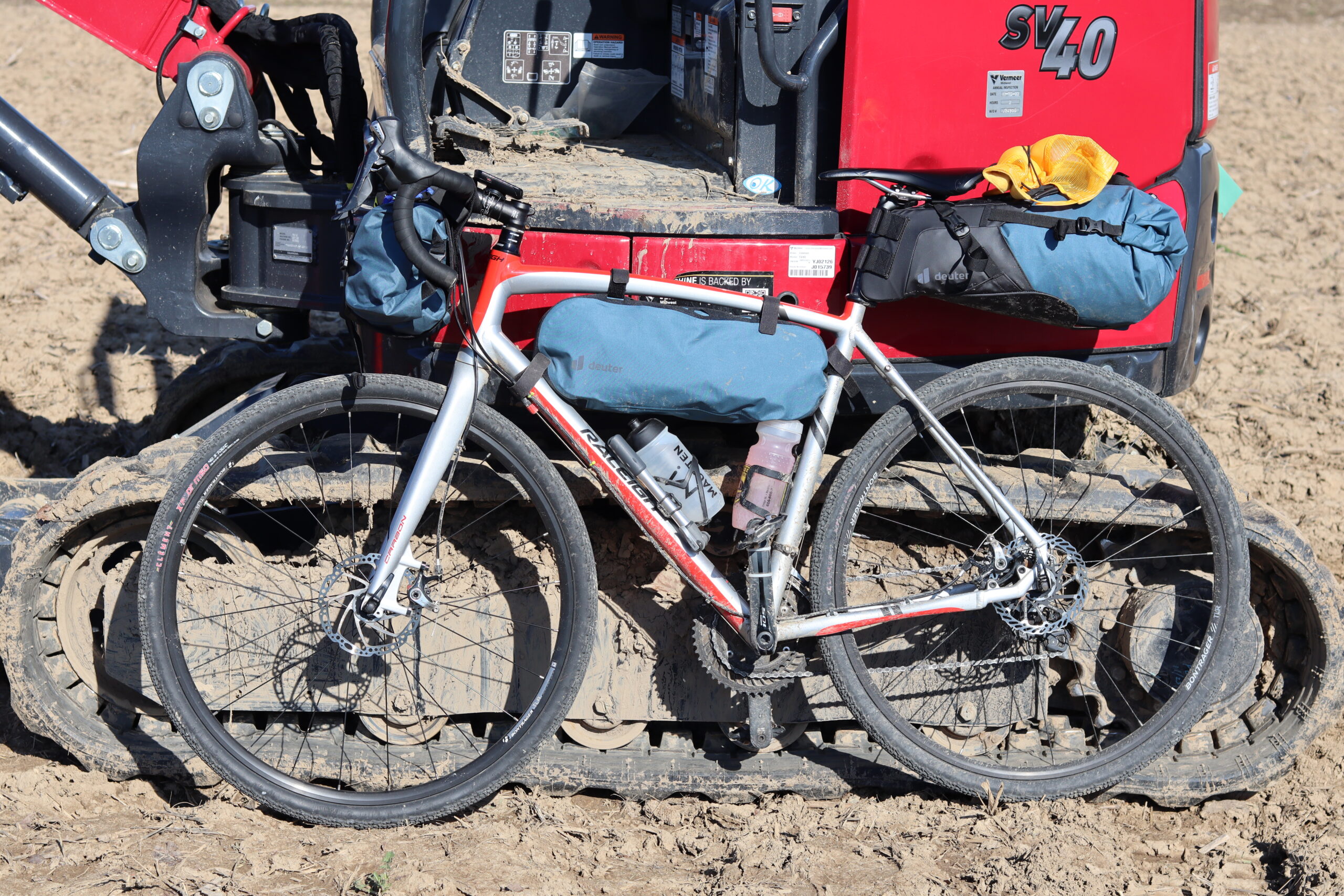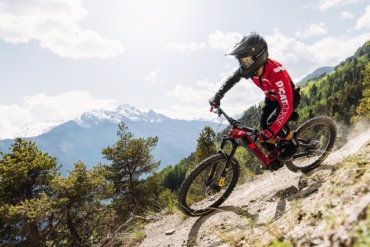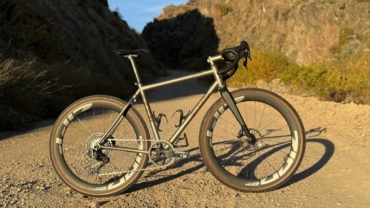Deuter is no stranger to making good bags. With a storied lineup of German-engineered hiking backpacks, the company’s signature clean lines and no-fuss aesthetic are a common sight on day and thru-hikers alike.
The brand took its first foray into the bikepacking space this spring with the Cabezon series. How do decades of bag-making experience translate across disciplines? I put the bags through 200+ miles of testing, from errand commutes to overnight campouts, on the tarmac, gravel roads, and single track, in order to find out.
In short: The Deuter Cabezon bags are lightweight, spacious, fully waterproof, and elegant in their simplicity. The frame bag and handlebar bag stand out as the top performers. They hit the right blend of minimal features for maximum benefits. The saddlebag, while effective, could benefit from more secure attachment points to reduce sway on single track and high-effort climbs.
Deuter Cabezon Bags Review
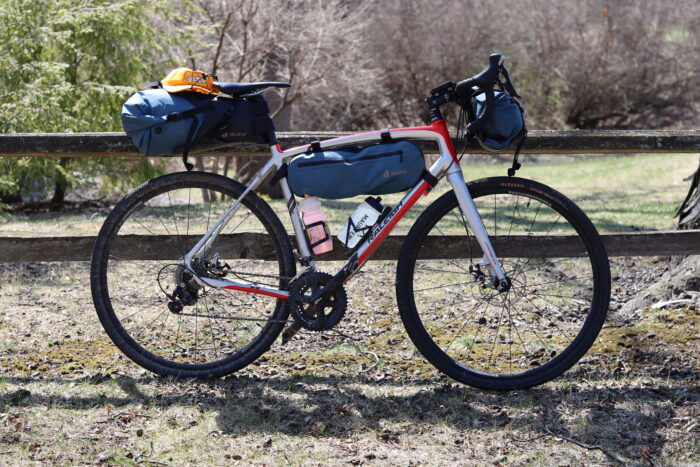
The Deuter Cabezon series consists of four pieces: the Cabezon Handlebar Bag 14 ($130), Cabezon Saddle Bag 16 ($140), Cabezon Frame Bag 4 ($105), and the Cabezon Frame Bag 6 ($115).
Each pack is waterproof and built from hard-wearing 220-denier polyamide and 600-denier polyester, and has taped and welded seams, as well as TPU-coated zippers. The handlebar bag and the saddle bag are each two-part systems consisting of a harness and detachable bike dry bag. This makes them handy for unpacking around the campsite but less suited for making adjustments on the bike on the fly.
Each bag comes in two color options, a sleek dark slate blue and a desert-inspired tan.
4L and 6L Frame Bags
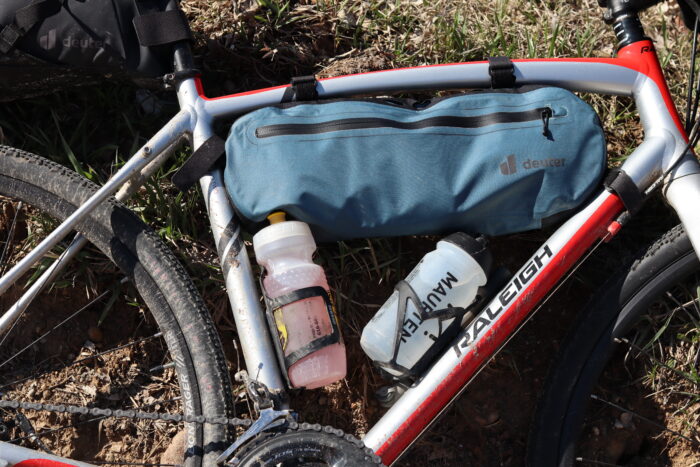
The Deuter Cabezon frame bags are no-frills, consisting of one dry-bag-like main compartment, a TPU zipper, and four straps to secure it to the frame. The top of each bag contains modular adjustment points, allowing you to move the straps to better fit the length of your top tube.
The main compartment is essentially a peculiar-shaped drybag, having little substance on its own. It relies on the bike’s geometry and the weight of the gear to provide shape. I’ll confess that while I installed the bag, I was skeptical of its efficacy. I usually prefer a more structured bag like Revelate Designs Tangle Frame Bag or Oveja Negra’s ½ Pack.
But, my initial skepticism disappeared after testing. Simply put, this bag can fit a lot. It’s the bikepacking equivalent of Patagonia’s favored Black Hole duffel. This is a ludicrously capacious bag, to quote an internet joke I’m certainly weeks too late on.
On long training rides, it easily handled a pump, spare layers, tool roll, and plenty of snacks. It swallowed a hefty hardcover book on an errand ride to the post office. And kept it bone dry in a Michigan spring downpour, no easy feat. And it loaded well with a stove, fuel, and other heavy essentials for the overnight test.
When stuffed to capacity, the frame bag tended to run wide, which didn’t bother me on my bike. But when my wife strapped the smaller 4L frame bag onto her Canyon Grizl 54cm frame, she had to adjust her riding to keep her knee from rubbing the pack. Part of this is just the struggle that riders with smaller bikes face across any bag setup, but it’s worth noting.
Also, the lack of internal pockets can lead to items sliding around without proper organization.
14L Handlebar Bag
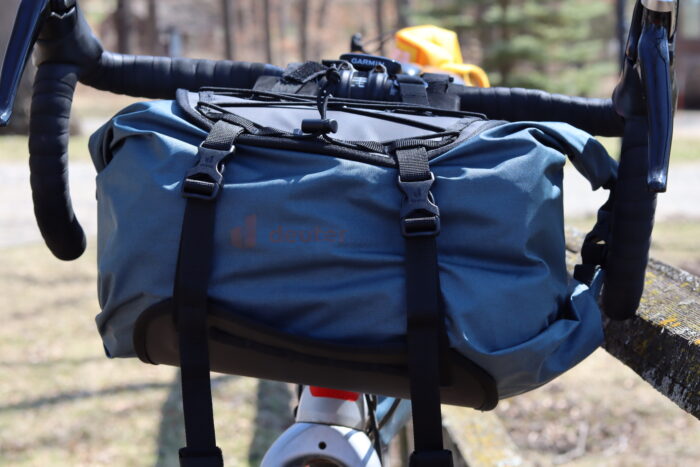
The Handlebar bag was the standout success of the collection for me. In the past, I’ve used various styles of handlebar bags and found none that hit the sweet spot of fitting onto my drop bars yet having enough capacity to be worth the wind drag and sacrificed hand positioning. The Cabezon stepped right up into that gap.
The 14L drybag has dual roll-top openings and a valve to bleed the air out, ensuring a compact and streamlined pack. It had enough capacity to fit my current bikepacking tent, the Sea to Summit’s Telos 2. It fit in its entirety, and there would have been room to add extra gear alongside if needed.
The harness hit an optimal ratio of rigidity and flexibility. I didn’t lose an undue amount of balance or have to manhandle my bars around curves, and it handled the Telos’ weight with stoic impressiveness.
It barely shifted over a deadly combination of Michigan gravel road potholes and twisty local singletrack. And the harness’s bungee strap was impressively tight, holding gloves, energy waffles, and briefly, valued sunglasses.
The installation process was straightforward, though Deuter does have overview videos on the site. The foam spacers are meaty and helpful for those who prefer extra real estate for their hands, as I do. And the simplicity-to-effectiveness ratio of the straps hits the Goldilocks zone. It was a no-fuss Velcro installation that held true despite the terrain and realistic weight inside.
16L Saddle Bag
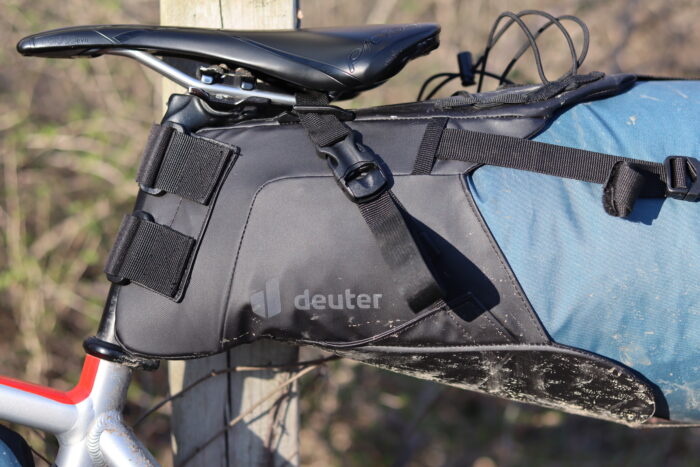
The saddlebag is also a two-part system consisting of a harness and a dry bag. The harness threads through the saddle rails and closes with a buckle, cinching and adjusting tension through the lower harness. It also has a large Velcro strap that attaches to the seat post, with segments of fabric that overlap or sandwich the seat post.
The harness is the piece I had the most trouble with. While I enjoyed the tool-free installation, it wasn’t worth the tradeoff of security. I appreciate the security that comes with systems like Ortlieb’s comparable Seat Pack or Revelate’s Spinelock.
The (literal) rub was the fixed points on the top of the harness that threaded through the saddle rails. Even with maximum tension from the bottom of the harness, there was wiggle due to the fixed top straps. While we’re talking centimeters, not inches, I still would have loved to crank the tension there.
Although I never worried the bag would fall off, it had an uncomfortable sway during standing efforts on big climbs or root-filled single-track. This did not affect performance but made me think about wasted effort counteracting the bag’s motion. And, I was annoyed feeling weight shifts when requiring optimum focus.
The bag’s external bungee also performed well.
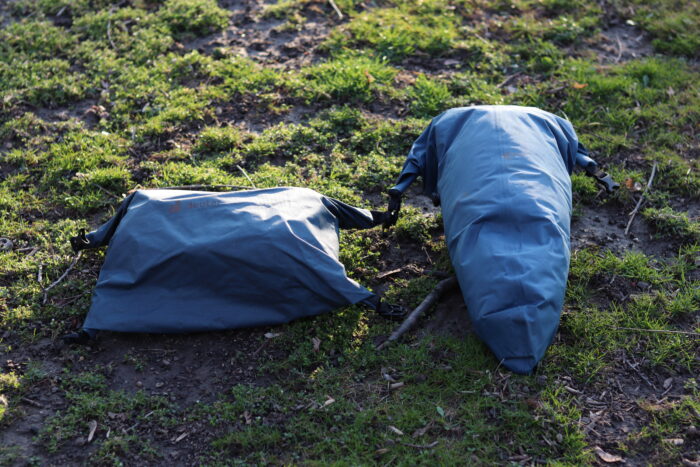
Like all saddlebag dry bags, the drybag is tapered in shape to fit the harness. This tapered shape is the unique challenge of all saddlebags or seat post bags. The dry bag has to fit within the prescribed space but still be useful.
I found that the Cabezon’s drybag, with its valve for bleeding out air, was as spacious as the rest of the collection. It easily swallowed my current sleep setup — Sea to Summit’s Spark II Sleeping Bag and Ether Light Sleeping Pad — with room to spare for extra layers for both on and off the bike.
I underpacked it for my overnight test, not anticipating the subfreezing temperatures and spring frost blanketing the ground come morning. But that was a user error, as a light down jacket and pants would have fit with room to spare.
I did find that packing out the bag fully multiplied the sway encountered from the harness. And a poorly packed bag, one where the smallest part of the tapered end wasn’t precisely filled, drastically increased sway.
Deuter Cabezon Bags: Conclusion
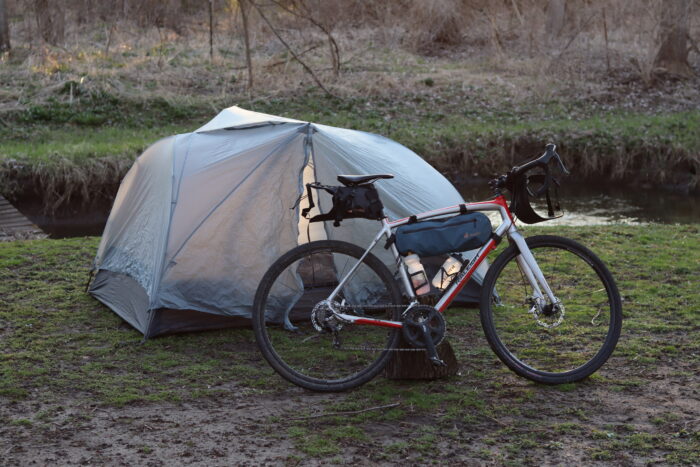
Lightweight and fairly priced, the Deuter Cabezon collection allows for serious performance on gravel rides — especially for riders to go light and fast without spending an extra fortune on exclusively ultralight or aero bags. It’s a strong outing from a company with a history of impressive products that stay true to the Deuter DNA.
Its minimalist construction is not ideal for bikepackers who like to constantly take things in and out throughout the ride. But it is well-suited for those who would rather pack well once and get riding.
The Cabezon’s tool-free installation and nothing-but-the-essentials design work in its favor. This optimizes space and hauls more gear than they look capable of fitting. There are a few details to iron out, especially around the saddlebag. But there are more successes than failures across the board. I’m looking forward to putting many more miles on mine, Michigan weather be damned.
